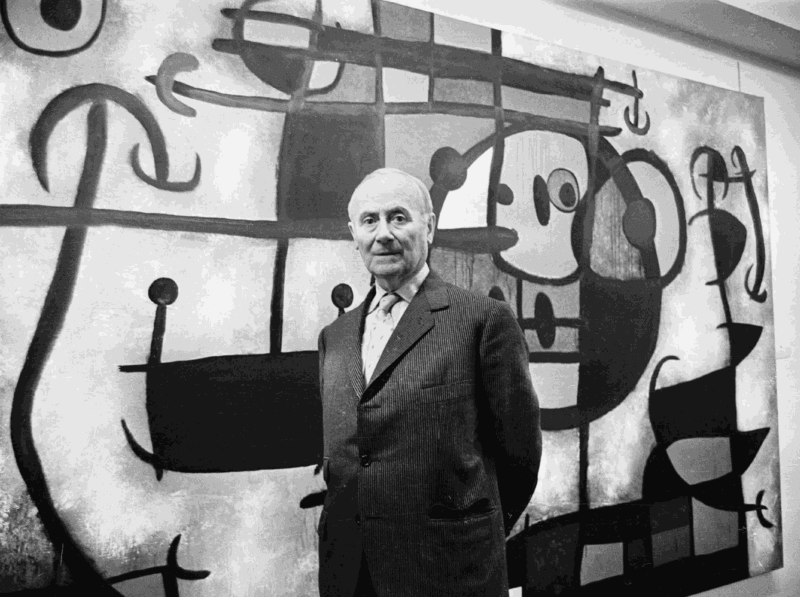
Share
- X
- Tumblr
Joan Miró (1893–1983) was a Catalan artist whose innovative approach to painting, sculpture, and ceramics established him as a major figure in 20th-century art. His work is celebrated for its unique combination of surrealism, abstract expressionism, and a distinctively personal visual language.
Joan Miró i Ferrà was born on April 20, 1893, in Barcelona, Spain. His father, Miquel Miró, was a goldsmith, and his mother, Dolors Ferrà, came from a family of merchants. Growing up in Barcelona, Miró was influenced by the vibrant cultural and artistic environment of the city.Miró began his formal art education at the Escola de la Llotja in Barcelona in 1912 and later attended the Escola Massana. During his studies, he was exposed to various modernist movements, which significantly influenced his artistic development. His early work was grounded in the Catalan avant-garde, and he soon became associated with a group of artists and intellectuals known as the "Noucentistes."
In 1920, Miró moved to Paris, where he was exposed to the burgeoning avant-garde movements and met influential artists such as Pablo Picasso and Georges Braque. The French capital was a crucial period for Miró, as he immersed himself in the surrealist movement and developed his distinctive style.Miró's work during the early 1920s was characterized by a playful, imaginative approach, combining abstract forms with symbolic imagery. His first major solo exhibition in Paris took place in 1921 at the Galerie La Licorne. Miró's style evolved rapidly, incorporating elements of Surrealism and automatic drawing, which led to his recognition as a leading figure in the movement.
Miró's involvement with Surrealism was marked by his exploration of the subconscious mind and his use of spontaneous, automatic techniques. His work from this period includes:
- "The Farm" (1921-1922) - A large painting that combines detailed realism with abstract, symbolic elements, reflecting Miró's early experiments with form and color.
- "Composition" (1933) - An example of Miró's mature surrealist style, characterized by vibrant colors, abstract shapes, and whimsical forms.
- "Harlequin's Carnival" (1924-1925) - One of his most celebrated works, showcasing a playful and chaotic composition filled with fantastical imagery.
In the 1930s and 1940s, Miró continued to innovate and expand his artistic practice. His work began to incorporate a more minimalistic and abstract approach, influenced by his growing interest in symbolism and mysticism.During the Spanish Civil War (1936-1939), Miró's work reflected his political concerns and response to the turmoil of the era. His iconic mural "The Reaper" (1937), created for the Spanish Pavilion at the 1937 International Exposition in Paris, is a powerful anti-war statement.After World War II, Miró focused on various mediums, including ceramics, printmaking, and sculpture. His large-scale public works and murals include:
- "The Wall of the Moon" (1964) - A major mural at the UNESCO headquarters in Paris, showcasing his distinctive style and use of abstract forms.
- "The Miró Foundation" (1975) - Established in Barcelona, the Joan Miró Foundation is dedicated to preserving and promoting his artistic legacy.
Joan Miró remained active and influential throughout his life. He continued to experiment with new techniques and materials until his death. Miró passed away on December 25, 1983, in Palma de Mallorca, Spain.
His artistic legacy is preserved in numerous museums and collections worldwide, including the Fundació Joan Miró in Barcelona, the Museum of Modern Art (MoMA) in New York, and the Tate Modern in London. Miró's work is celebrated for its imaginative use of color, form, and symbolism, and his influence extends across various artistic disciplines.